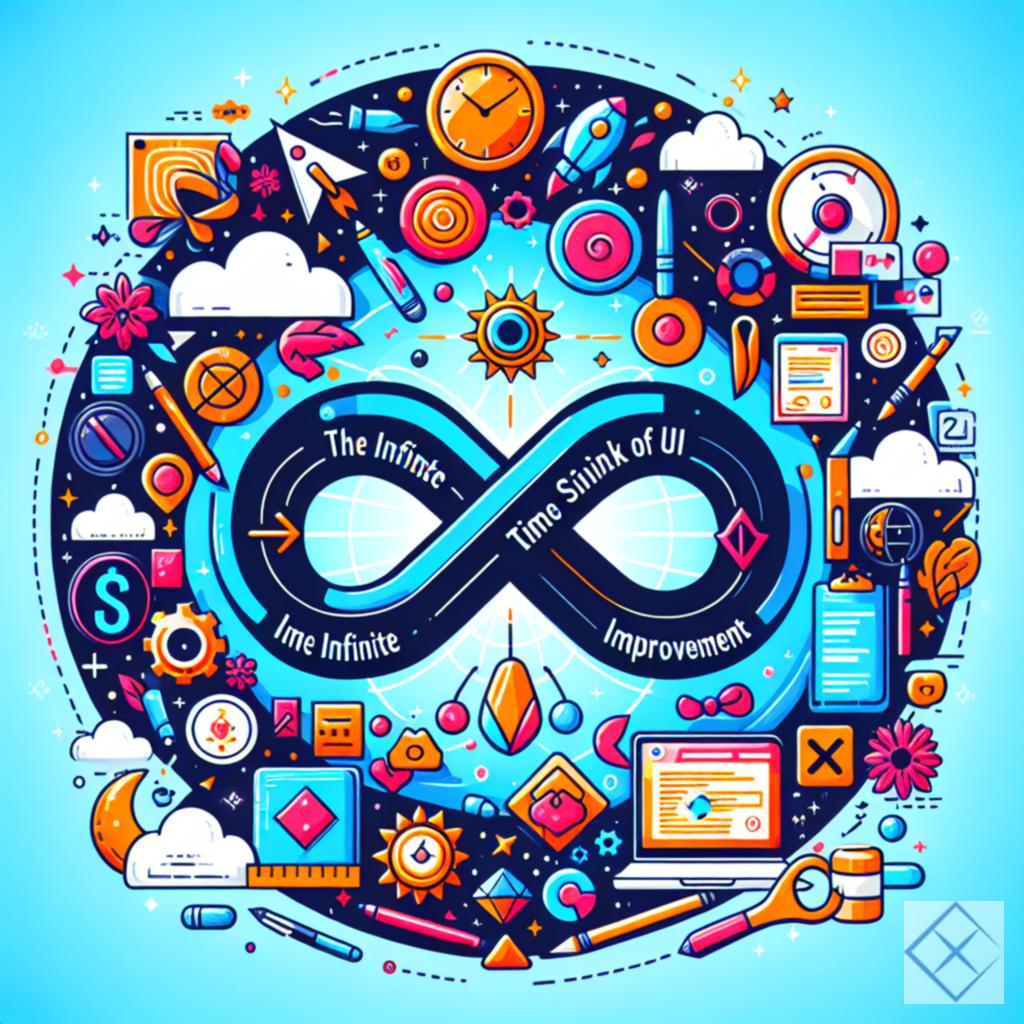Is there a term for the potentially infinite time sink of improving a UI

The Infinite Time Sink of UI Improvement: Understanding the Phenomenon
In the world of front-end development, there’s a unique phenomenon that many developers encounter: the seemingly infinite time sink of improving a User Interface (UI). As developers, we often find ourselves in a perpetual cycle of tweaking, adjusting, and refining our designs. It raises the question: is there a term for this endless pursuit of UI perfection?
The Nature of UI Improvement
Unlike backend development, where functionality often reaches a “good enough” state after meeting specific requirements, UI design feels like an ongoing quest for perfection. There’s always room for improvement—whether it’s resizing elements, changing colors, or rearranging components. This relentless drive contrasts sharply with backend optimization, where the impact of changes can often be quantified in terms of time saved or performance gains.
In the UI realm, however, the stakes are different. Minor adjustments can lead to major user experience (UX) implications. A misplaced button or poor color choice can confuse users, leading them to contact support or abandon the product altogether. The subjective nature of design—where everyone, from stakeholders to end-users, has an opinion—complicates matters further.
Finding a Term for the Phenomenon
Several terms have been suggested to capture this phenomenon:
-
Gold Plating: Often used in project management, this term refers to the practice of adding unnecessary features or enhancements that don’t significantly improve functionality. While it can apply to both backend and frontend development, it resonates strongly with UI improvements that go beyond necessity.
-
Bikeshedding: Coined from the analogy of a committee spending excessive time on trivial matters (like the color of a bike shed) while neglecting more complex issues, this term perfectly encapsulates the tendency to focus on superficial UI changes instead of addressing more critical development tasks.
-
Scope Creep: Common in project management, this term describes the uncontrolled expansion of project scope without adjustments to time, cost, and resources. In UI development, scope creep manifests as an endless cycle of changes and enhancements that distract from delivering a functional product.
-
Perfectionism: While striving for high-quality design is commendable, it can lead to a paralyzing state where developers continuously tweak and refine without ever declaring a project “done.”
-
Gilding the Lily: This phrase refers to the act of adding unnecessary ornamentation to something already beautiful. It serves as a reminder that sometimes, less is more when it comes to design.
These terms highlight the struggle developers face in balancing the desire for a polished interface with the need to deliver functional products on time.
The Importance of User-Centric Design
To combat the pitfalls of endless UI refinement, it’s essential to adopt a user-centric approach. Conducting user research can provide invaluable insights into what actual users find important. By focusing on users’ needs rather than subjective opinions, designers can prioritize enhancements that genuinely improve the experience.
Key questions to consider include:
- Is this interface allowing the user to achieve their goals as efficiently as possible?
- Is this interface interfering with the user’s ability to achieve their goals?
By grounding design decisions in user feedback and measurable outcomes, teams can avoid the rabbit hole of endless tweaks and instead focus on meaningful improvements.
The Role of Iteration and Feedback
In the realm of software development, particularly UI design, the principle of iteration is vital. No software is ever “finished”; it merely reaches a point where it is “stopped” from further development. Continuous improvement is a natural part of product evolution, particularly in agile environments. However, it’s essential to establish clear metrics and feedback loops to guide this iterative process.
Techniques such as A/B testing and user experience testing can provide concrete data on how changes affect user behavior. This data-driven approach can alleviate the anxiety of making changes based solely on gut feelings or personal preferences.
Conclusion: Striking a Balance
Ultimately, the drive to improve UI is both natural and necessary. However, recognizing when enough is enough is key to maintaining productivity and morale within development teams. By establishing a clear design framework, involving users in the design process, and understanding the terms that describe our tendencies, we can navigate the complexities of UI development more effectively.
As we continue to evolve our products, let’s embrace the iterative nature of design while also acknowledging the importance of pragmatism and user needs. After all, the goal is not to create a perfect UI but one that serves its users effectively and efficiently.
This blog post captures the nuances of the original discussion while providing insights into the challenges and strategies in UI development, inviting further engagement and reflection from readers.
"Ready to conquer your UI challenges? Schedule a 1-on-1 coaching session today!“
Related Posts
- Why TF did my company switch to TypeScript for backend work from C#
- What’s better for large scale with lots of users A few big downloads or lots of little ones
- It feels like more and more we’re heading into a future with less software developers: whats your plan
- Help Needed: Preparing for Walmart-Karat Senior iOS Developer Interview
- Summary: Summary: Started DSA but…